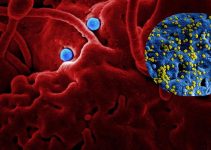Acne is a disease whose main characteristic is the appearance of lesions on the skin.
These lesions are the product of folliculitis. That is an inflammation.
After its appearance, the follicular pore can become infected, and this is how black pimples, pimples, red and inflamed patches are produced.
The appearance can become like cysts. And its implications range from psychological to social levels.
Sometimes Acne can affect the individual in their work environment because it does not allow them to have a reasonable degree of physical presence.
What are the symptoms of Acne?
The most common symptoms of Acne are the following:
- Cysts
- Pimples
- Pustules
- Small, red bumps.
- Scabs with skin rashes.
- Scars on the skin.
- Redness around the skin rashes.
- Black pimples.
Acne is one of those conditions whose symptoms include lesions that can be easily visualized.
Some patients can suffer several injuries at the same time.
Acne appears mainly on places on the face, such as the cheeks, forehead, and chin.
It can also cause lesions in the presternal region, the seborrheic areas of the body, the back, and the shoulders.
A significant fact is that Acne can get worse during the winter, while it could improve in the summer.
The sun is believed to have specific beneficial effects on Acne, which is why this improvement occurs in the summer.
Diet is not a very influential factor in Acne. However, some are sensitive to certain foods.
It is very likely that in some women, Acne appears during menstrual cycles in young women.
During pregnancy, it is also possible to suffer from Acne.
How does it evolve?

The evolution of Acne can be explained by stages that progress gradually.
It is important that you go to the doctor for a diagnosis that allows you to indicate a specific treatment according to the stage.
If that care is not taken, Acne will advance. However, you must be aware that Acne can appear suddenly to an advanced degree in the same way.
Acne does not always appear in the initial stage, as sometimes its progress is much faster than in other cases.
Here are briefly the stages in the evolution of Acne:
First stage of Acne
In this stage, comedonal Acne occurs, and it presents with redness and mild inflammation.
Second stage of Acne
At this stage, comedonal Acne is more severe, more pimples and bumps can be seen in Acne’s area.
Third stage of Acne
When Acne progresses, or this stage occurs, the main character is the formation of pustular papule acne.
It may form slightly, but if it is not treated, it will continue to advance.
If the pimples with pus are squeezed with the fingers at this stage, the pus will spread to the entire area, and this will cause more spots.Fourth stage of Acne
Fourth stage
In this stage, it progresses to severe pustular Acne. It is more difficult to cure.
It is also more challenging to treat and remove; this is because, at this stage, its evolution makes it more persistent.
Conventional treatments do not cause any breakthrough.
Fifth stage
In this stage, Acne has evolved more and is of the cystic nodule type. Thus, it represents the most advanced stage.
Its persistence requires a more specific type of treatment and must be treated otherwise. Its marks remain for life.
When the evolution of Acne of the cystic nodule type occurs on the face, it deserves more care.
It is essential to consider that not all people suffer the same symptoms in each of the stages of their evolution.
We must also contemplate that evolution does not occur in all people, as some have more predisposition than others.
Acne can appear from the first stage and evolve little by little. In others, it could not evolve and disappear without special treatments.
Diagnosis
To diagnose Acne, it should be done clinically, and this through the presence of one or more elementary lesions and characteristics of Acne.
There are other alterations with which Acne is associated. These can be menstrual disorders, seborrhea, increased hair, or hair loss.
For the diagnosis of Acne, a complementary hormonal analysis can be done.
This will allow ruling out the presence of hormonal alterations, and in this way, more effective treatment can be established.
What’s next?
There are two ways to treat Acne: topical and systemic, and you can learn about them on: How to treat Acne





